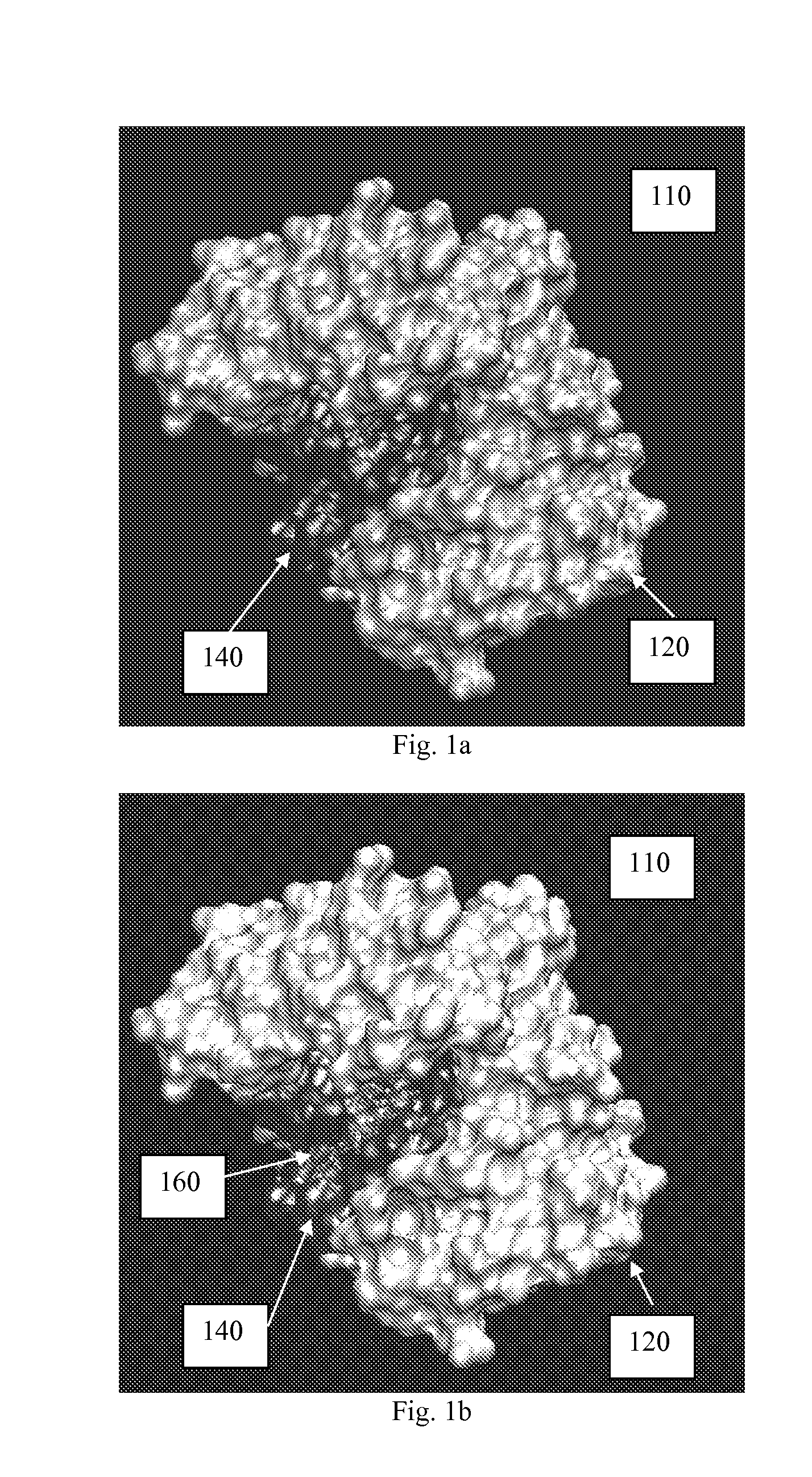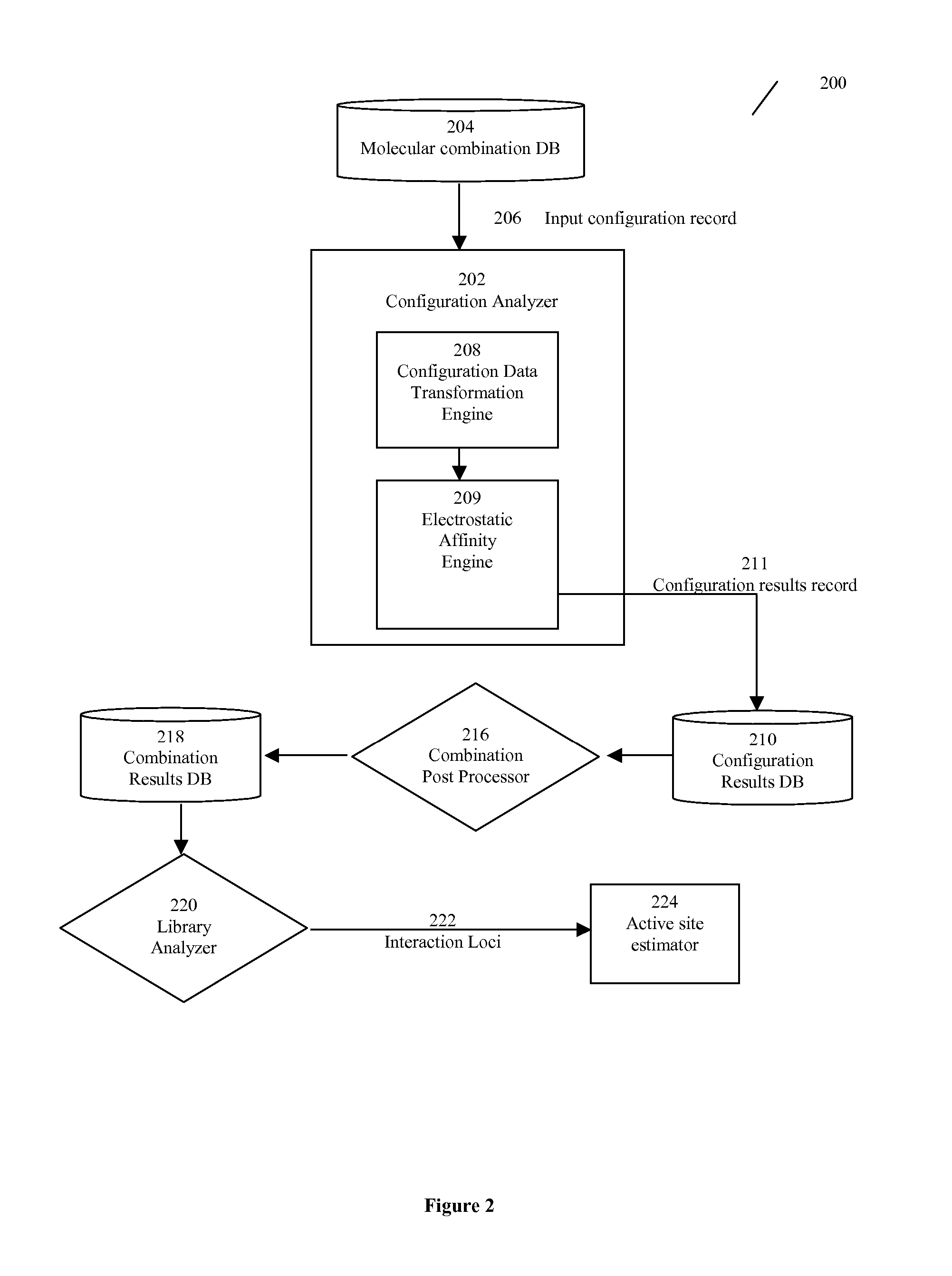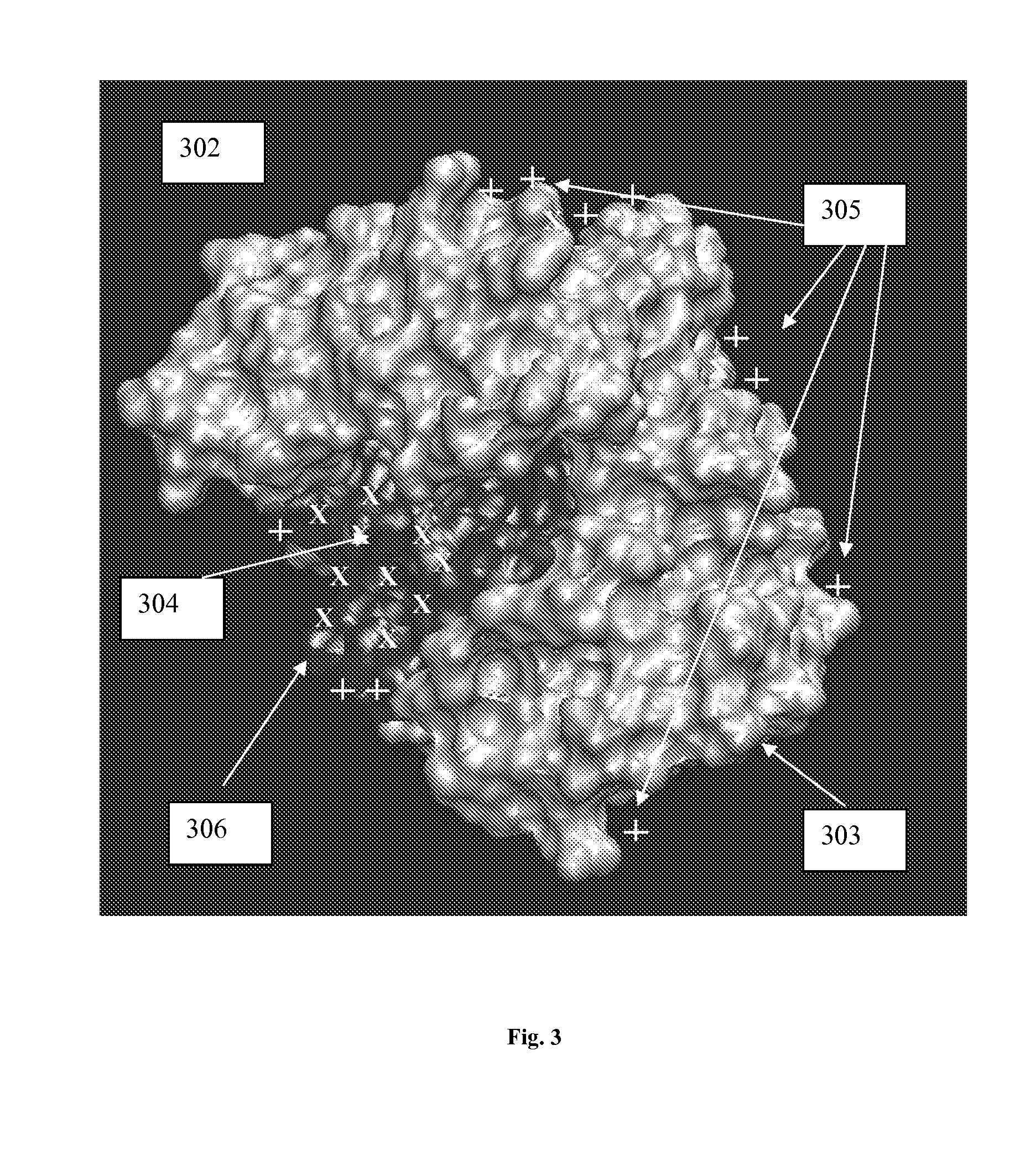Method for Estimation of Location of Active Sites of Biopolymers Based on Virtual Library Screening
a biopolymer and active site technology, applied in the field of bioinformatics, proteomics, molecular modeling, computer-aided molecular design, etc., can solve the problems of inability to achieve, long and expensive process, and many limitations of the conventional drug discovery process, and achieve high relative affinity, accurate, and robust results
- Summary
- Abstract
- Description
- Claims
- Application Information
AI Technical Summary
Benefits of technology
Problems solved by technology
Method used
Image
Examples
Embodiment Construction
[0117] In general, the present invention relates to an efficient computational method for estimating the location of one or more active sites on a target biopolymer based on the collective analysis of molecular combinations featuring two or more molecular subsets, wherein one of the molecular subsets are from a plurality of molecular subsets selected from a molecule library while the other is from the target biopolymer. In one aspect, the invention analyzes each potential molecular combination to determine a plurality of molecular configurations with high relative affinity. The collective set of such configurations along with their attendant scores or predicted affinity values may then be combined across the library and subjected to a statistical and / or clustering analysis. Based on the results of this analysis, a plurality of interaction loci is mapped out on the molecular surface of the target biopolymer. These interaction loci can then be further analyzed to identify the location...
PUM
| Property | Measurement | Unit |
|---|---|---|
| physical | aaaaa | aaaaa |
| chemical information | aaaaa | aaaaa |
| affinity | aaaaa | aaaaa |
Abstract
Description
Claims
Application Information
 Login to View More
Login to View More - R&D
- Intellectual Property
- Life Sciences
- Materials
- Tech Scout
- Unparalleled Data Quality
- Higher Quality Content
- 60% Fewer Hallucinations
Browse by: Latest US Patents, China's latest patents, Technical Efficacy Thesaurus, Application Domain, Technology Topic, Popular Technical Reports.
© 2025 PatSnap. All rights reserved.Legal|Privacy policy|Modern Slavery Act Transparency Statement|Sitemap|About US| Contact US: help@patsnap.com



